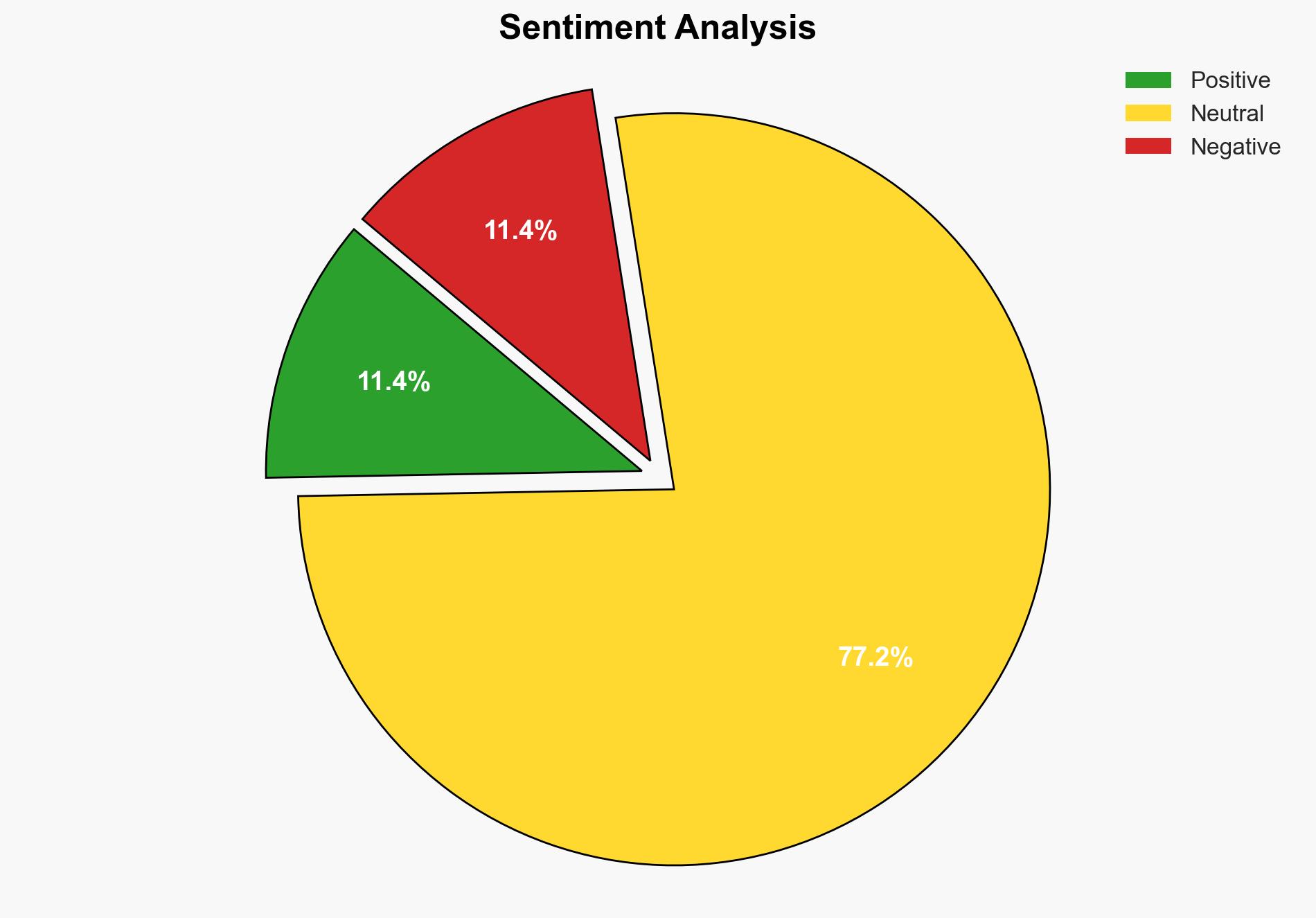SLOCs and Chokepoints Panama Greenland Canada and Indigenous Peoples – Antiwar.com
Published on: 2025-03-03
Intelligence Report: SLOCs and Chokepoints Panama Greenland Canada and Indigenous Peoples – Antiwar.com
1. BLUF (Bottom Line Up Front)
The strategic control of sea lines of communication (SLOCs) and maritime chokepoints in regions such as Panama, Greenland, and Canada is critical for maintaining global military and economic primacy. Recent discussions have highlighted potential geopolitical tensions, particularly involving Donald Trump, regarding the control of these regions. The implications of these tensions could impact international maritime law, regional stability, and global trade routes. Immediate attention is required to address potential conflicts and ensure freedom of navigation.
2. Detailed Analysis
The following structured analytic techniques have been applied for this analysis:
SWOT Analysis
Strengths: Strategic location of Panama Canal as a key maritime chokepoint; existing international agreements supporting freedom of navigation.
Weaknesses: Vulnerability to political instability and military threats; reliance on international cooperation.
Opportunities: Strengthening international maritime laws; potential for diplomatic resolutions.
Threats: Military interventions; disruption of global trade routes; regional conflicts.
Cross-Impact Matrix
Events in Panama could influence trade dynamics in the Caribbean and beyond. Control over Greenland’s resources may impact Arctic policies, while Canadian chokepoints could affect North American security strategies. The interconnectedness of these regions necessitates a comprehensive approach to policy-making.
Scenario Generation
Scenario 1: Diplomatic resolutions lead to strengthened international agreements and stable trade routes.
Scenario 2: Military escalation results in regional conflicts and disrupted global trade.
Scenario 3: Increased cooperation among nations leads to innovative solutions for resource sharing and security.
3. Implications and Strategic Risks
The potential for military intervention in these regions poses significant risks to national security and regional stability. Disruption of SLOCs could lead to economic downturns and increased geopolitical tensions. Monitoring emerging trends and patterns is crucial to anticipate and mitigate these risks.
4. Recommendations and Outlook
Recommendations:
- Enhance diplomatic efforts to reinforce international maritime laws and agreements.
- Invest in technological advancements to monitor and secure key maritime chokepoints.
- Encourage multilateral cooperation to address potential conflicts and ensure resource sharing.
Outlook:
Best-case scenario: Strengthened international cooperation leads to secure and open trade routes.
Worst-case scenario: Military conflicts disrupt global trade and escalate regional tensions.
Most likely scenario: Continued diplomatic negotiations with intermittent tensions and resolutions.
5. Key Individuals and Entities
The report mentions significant individuals such as Donald Trump and organizations involved in the geopolitical dynamics of SLOCs and maritime chokepoints. Their actions and decisions will play a crucial role in shaping the future of these regions.





